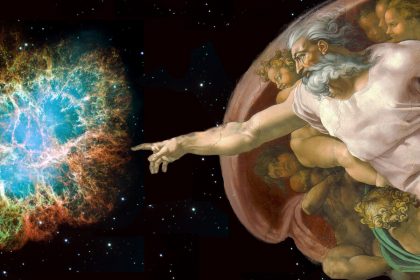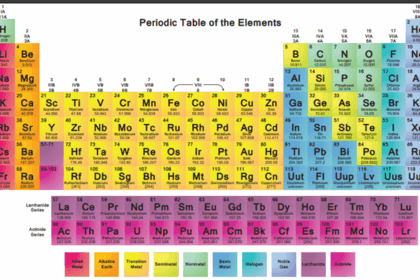Hi readers!
Oscar Wilde proclaimed that, “an idea not dangerous is unworthy of the name” while Norman Vincent Peale (American protestant priest), says, “idea that chang thoughts changes the world” but what about changing the scientific ideas?
Scientific American will publish an article authored by Charles C. Mann.
in September 2025 issue Vol. 333 No. 2 titled
“What happens when an entire generation of scientists changes their mind”
Let’s have a look.
Mann says scientific reversal stars in1887 when Albert A. Michelson and Edward W. Morley conducted what is often called the world’s first failed physics experiment:
For nearly two centuries, researchers kept believing that light was a wave traveling through a material commonly called aether but without evidence. When Michelson and Morley experimented to measure the effects of this material, they found absolutely no trace while experiment proved that outer space was a featureless, nearly empty vacuum which meant that objects could be located only in reference to one another: a realization that took 180-degree turn in Einstein’s theories of relativity and turned space and time into a single curve created by mass and energy.
Physicists at that time were reexamining ideas often dated back to the Greeks that had yet to be probed with modern tools. Michelson and Morley was just the beginning. Since many of the foundational assumptions in physics had never been carefully tested, it seemed almost inevitable in retrospect that a considerable number would fall to the first scrutiny.
In1860, Louis Pasteur proved that fermentation was caused by microorganisms and not by some self-starting chemical reaction, which at that time, was the governing theory. Pasteur’s work led to germ theory, which overturned earlier ideas about infectious disease.
Then came the era when scientific findings became the concern to the political authorities. The most notorious example of this was whether women under the age of 50 should be routinely screened with mammograms? This was a political issue that influenced science in the U.S. since 19th century.
In early 1970, the National Cancer Institute (NCI) and the American Cancer Society launched the Breast Cancer Detection Demonstration Project (BCDDP) to test the potential of large-scale mammography.
The results of the screening were released in 1980s and showed that mammograms detected breast tumors that would not otherwise have been spotted, and screening did not produce excessive false positives, while re-analysis of earlier smaller trial showed that mammography for younger women had positive effects.
Based on combined result, recommendations were issued in 1989, that women should begin screening for cancer at the age 40.
But, in 1992, the Canadian National Breast Screening Study of Cancer, conducted the first randomized clinical trial to examine the effectiveness of under-50 mammography and released a contradictory report indicating that testing younger women did not reduce death rates hence big randomized clinical trials are considered the best way to understand the efficacy of medical treatments.
NCI convened a workshop on this issue and concluded that “there is no reduction in mortality from breast cancer that can be attributed to screening” hence, the Institute would not promote screening for women in their 40s because the potential good effects (catching a few relatively rare cancers at early stage) outweighed by the potential bad effects (scaring women that can lead to many painful and unnecessary surgeries).
The American Cancer Society, the American College of Radiology, and other medical groups conceded that enough data was not available to support under-50 mammography, but Congress voted 98–0 to order the NCI to back screening for younger women. The institute surrendered. The American Cancer Society joined it to state that screening for women in their 40s was “beneficial and supportable with current evidence but:
In 2009, the U.S. Preventive Services Task Force (USPSTF) went in the opposite direction and saidthat,
“almost 2,000 younger women would have to be screened to save one life. The other 1,900-plus women would be exposed to the risks of radiation and surgery”.
The White House denounced the USPSTF’s stance. The task force backed down, saying instead that women should consult their doctors.
The actual reversal took place in 2024, when USPSTF issued another set of recommendations in favor of routine mammograms for women in their 40s.
When eight big randomized controlled trials of mammography for women under 50 were put together, the results showed that the tests produce very high, specific benefits for a small number of women,
Nevertheless, the glare of publicity transformed a slow but fairly typical research debate into a huge controversy.
This is a textbook example of how science has been made controversial and managed for politically charged reversals which will not decline instead, future reversals may include causes and treatment of obesity or of Alzheimer’s disease. All are the subjects of intense lobbying by commercial and public-interest groups.
The belief that the universe preserves parity (uniformity that the mirror reflection of any physical process is identical to its unmirrored counterpart except for being flipped from left to right) was challenged in Top of FormBottom of Form1956 by physicists Chen Ning Yang of Princeton University and Tsung-Dao Lee of Columbia University.
They argued if anyone had proved that parity was preserved in quantum interaction as nobody had checked the “weak nuclear force” responsible for radioactive decay? Chien Sheung found for the first time that the weak force did not conserve parity.
Lee and Yang won the 1957 Nobel Prize in Physics for beginning the parity U-turn that was the last time particle physics went through such a sweeping reversal.
The first fashionable word in the field of artificial intelligence was the use of perceptron: a fundamental artificial neuron which is a computational system that AI researchers believed would rival human intelligence and ultimately lead to machines with true consciousness.
The outburst stopped after 1969, when computer scientists Marvin Minsky and Seymour Papert took a careful look at the idea and found that perceptron’s could never even distinguish between odd and even numbers. With this embarrassment the perceptron bubble exploded but didn’t disappear as it changed into more sophisticated neural networks, which in turn played a role in the development of today’s “large language model”
French physician Alphonse Laveran spotted microscopic living creatures in malaria patient’s blood in 1890 when Greeks doctors had believed that malaria was caused by “miasma” (misty air polluted with particles from decomposed matter) but based on his observations, Laveran proclaimed that malaria was caused by protozoans: an idea that France’s malaria authority ridiculed, but Laveran struct to his point and proposed that Plasmodium was carried by mosquitoes, not mist. This, too, was dismissed.
Laveran subsequently proved right, and within a decade scientists had to reverse themselves again.
In the United States, collision between politics and science, is not something unexpected especially after1803, the year of the Louisiana Purchase. The U.S. government dispatched four teams to survey the territory. One team crossed the continent by a northern route while the other three went through southern and central plains and were prevented by Spanish troops. The teams were resent again in 1819 with Engineer Stephen H. Long in the lead who didn’t know that southern plains were beset by a multiyear drought so his team almost starved.
The expedition’s report portrayed southern plains as “irreclaimable sterility.”
In the center of the team’s map was a capitalized label
“GREAT AMERICAN DESERT”.
Long didn’t know at time what we now know that in the central and southern plains, long-term atmospheric instabilities from the Pacific (the El Niño–Southern Oscillation) and the Atlantic (the Atlantic Multidecadal Oscillation) mix with warm, moist air currents from the Gulf of Mexico and cold, dry air from the Arctic jet stream.
These phenomena collide unpredictably causing tornadoes, blizzards, severe hailstorms, epic heat waves, and lengthy droughts:
the 1930 Dust Bowl is the classical example
Long’s belief that aridity was the region’s permanent state was incorrect because arid and wet periods came in irregular cycles.
Yet that realization was not what happened, because politicians and wealthy interests, especially new railroad tycoons, wanted people to move to the plains and create communities that both produced and bought goods and crops to be transported by train.
Researchers disputed that the region was too drought-prone to sustain agriculture. But their claims were buried underneath the flyers, leaflets and advertisements from railroads and Great American Desert was converted as a
Great American Garden.
Dear readers! I have never reversed my hypothesis but know many who after spending the entire career realized that they should not have been doing what they did during their career? Do you know any?
See you again with some more interesting work. Till then, take care,
Bye.





